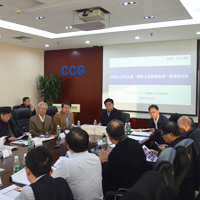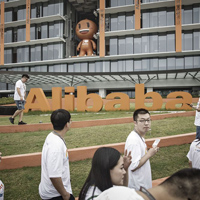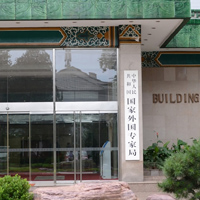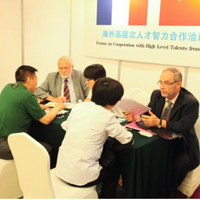- 当前位置:
- 首页>
- 活动>
- ������������
������������
CCG持续关注国际关系议题,推动中国与全球化的发展,积极开展国际交流,充分发挥智库“二轨外交”作用,在巴黎和平论坛、达沃斯世界经济论坛、慕尼黑安全会议等重要国际政策与意见交流平台上组织分论坛、边会、圆桌会议、晚宴等活动,促进国际政商学界对话,凝聚共识;CCG积极与各国政界、智库界、工商界开展“二轨外交”活动,每年常态化赴多国调研与交流,促进中外关系攸关方互动,保持与多国政策圈层的沟通渠道。
-

[经济日报网] “国外人才发展丛书”圆桌研讨会在京举行
2018年1月10日,全球化智库(CCG)与中国国际人才专业委员会在北京举办中国人才50人暨“国外人才发展丛书”圆桌研讨会。 “人才强国研究出版工程”是国内首个系统、全面展示人才强国战略推进实施的大型研究出版工程,“国外人才发展丛书”是人才强国研究出版工程的重要组成部分。丛书汇集了20多位我国研究国外人才发展经验和政策制度的专家学者的代表性著作,同时引进翻译美国、芬兰等国人才学专家的专著,系统展现了我国学者关于世界典型国家人才发展政策法规和创新实践的学术研究成果,为了解典型国家人才发展历程和成败经验提供了借鉴。 中组部党建读物出版社总编辑张阳升表示,“国外人才发展丛书”有4个特点: 第一,系统介绍和研究国外人才政策,具有创新性,本套丛书以《国家中长期人才发展规划纲要》提出的人才发展体制机制为核心,系统介绍各国人才发展相关政策法规、创新做法和实践经验,给读者正确理解中央关于人才工作的最新精神、借鉴国外人才工作好做法、建设人才强国指明了方向; 第二,全面梳理典型国家人才发展经验,具有参考性,本套丛书紧密关注学界热点,梳理了当今世界典型国家人才政策体系和体制机制,不仅为国外人才理论研究和人才学的学科繁荣充当了“马前卒”,也是人才工作推进、机制创新、制度改革、队伍建设的“铺路石”; 第三,研究内容贴近现实需要,具有实用性,本套丛书既包括基础理论研究、人才战略实施等宏观比较,又包括典型国家人才制度演进、政策构建、机制创新等实际问题研究,涵盖了理论创新与实践探索等各方面,把实践经验上升为理性认识,并服务于新的人才工作实践; 第四,聚焦各国人才理论和实践最新成果,具有前瞻性,这套书运用文献研究、直接调查、材料分析等多种方法,比较研究典型国家人才发展经验,重点关注人才发展一般规律,及时呈现国外人才发展研究的最新成果,具有前瞻性特征。文章选自经济日报网,2018年1月11日【历届回顾】第四届中国人才50人论坛第三届中国人才50人论坛第二届中国人才50人论坛第一届中国人才50人论坛
2018年1月16日 -

【Bloomberg】Chinese Workers Abandon Silicon Valley for Riches Back Home
An exodus triggered by abundant capital, growing innovation and flourishing career opportunitiesWang Yi PHOTOGRAPHER: QILAI SHEN/BLOOMBERGA few years ago, Wang Yi was living the American dream. He had graduated from Princeton, landed a job at Google and bought a spacious condo in Silicon Valley.But one day in 2011, he sat his wife down at the kitchen table and told her he wanted to move back to China. He was bored working as a product manager for the search giant and felt the pull of starting his own company in their homeland. Still, it wasn’t easy persuading her to abandon balmy California for smog-choked Shanghai.“We’d just discovered she was pregnant,” said Wang, now 37, recalling hours spent pacing their apartment. “It was a very uneasy few weeks before we made our decision, but in the end she came around.”His bet paid off: his popular English teaching app Liulishuo or LingoChamp raised $100 million in July, putting him in the growing ranks of successful Silicon Valley alumni lured back to China by the promise of a brighter future. His decision is emblematic of an unprecedented trend with disquieting implications for Valley stalwarts from Facebook Inc. to Alphabet Inc.’s Google.U.S.-trained Chinese-born talent is becoming a key force in driving Chinese companies’ global expansion and the country’s efforts to dominate next-generation technologies like artificial intelligence and machine learning. Where college graduates once coveted a prestigious overseas job and foreign citizenship, many today gravitate toward career opportunities at home, where venture capital is now plentiful and the government dangles financial incentives for cutting-edge research.“More and more talent is moving over because China is really getting momentum in the innovation area,” said Ken Qi, a headhunter for Spencer Stuart and leader of its technology practice. “This is only the beginning.”Chinese have worked or studied abroad and then returned home long enough that there’s a term for them – “sea turtles.” But while a job at a U.S. tech giant once conferred near-unparalleled status, homegrown companies -- from giants like Tencent Holdings Ltd. to up-and-comers like news giant Toutiao -- are now often just as prestigious. Baidu Inc. -- a search giant little-known outside of China -- convinced ex-Microsoft standout Qi Lu to helm its efforts in AI, making him one of the highest-profile returnees of recent years.Qi Lu PHOTOGRAPHER: BILLY H.C. KWOK/BLOOMBERGAlibaba Group Holding Ltd.’s coming-out party was a catalyst. The e-commerce giant pulled off the world’s largest initial public offering in 2014 -- a record that stands – to drive home the scale and inventiveness of the country’s corporations. Alibaba and Tencent now count among the 10 most valuable companies in the world, in the ranks of Amazon.com Inc. and Facebook. Chinese venture capital rivals the U.S.: three of the world’s five most valuable startups are based in Beijing, not California. And it doesn’t help that U.S. President Donald Trump’s administration continues to pursue restrictive immigration policies, discouraging foreign students and workers alike.Tech has supplanted finance as the biggest draw for overseas Chinese returnees, accounting for 15.5 percent of all who go home, according to a 2017 survey of 1,821 people conducted by think-tank Center for China & Globalization and jobs site Zhaopin.com. That’s up 10 percent from their last poll, in 2015. The number of graduates returning from overseas – mainly from the U.S. – skyrocketed to 432,500 in 2016, up 22 percent from 2013, the survey shows.Not all choose to abandon the Valley. Of the more than 850,000 AI engineers across America, 7.9 percent are Chinese, according to a 2017 report from LinkedIn. That naturally includes plenty of ethnic Chinese without strong ties to the mainland or any interest in working there. However, there’re more AI engineers of Chinese descent in the U.S. than there are in China, even though they make up less than 1.6 percent of the American population.A cyclist rides a bicycle inside the Googleplex headquarters in Mountain View, California. PHOTOGRAPHER: MICHAEL SHORT/BLOOMBERGYet the search for returnees has spurred a thriving cottage industry. In WeChat and Facebook cliques, headhunters and engineers from the diaspora exchange banter and animated gifs. Qi watches for certain markers: if you’ve scored permanent residency, are childless or the kids are prepping for college, expect a knock on your digital door.Jay Wu has poached over 100 engineers for Chinese companies over the past three years. The co-founder of Global Career Path ran online communities for students before turning it into a career. The San Francisco resident now trawls more than a dozen WeChat groups for leads.“WeChat is a good channel to keep tabs on what’s going on in the circle and also broadcast our offline events,” said the UC Berkeley grad who’s hosted sessions for Alibaba and JD.com Inc. as well as online travel service Ctrip.Ditching Cupertino or Mountain View for Beijing can be a tough sell when China’s undergoing its harshest internet crackdown in history. But its tech giants hold three drawcards: faster growth in salaries, opportunity and a sense of home.China’s internet space is enjoying bubbly times, with compensation sometimes exceeding American peers’. One startup was said to have hired an AI engineer for cash and shares worth as much as $30 million over four years.For engineers reluctant to relinquish American comforts, Chinese companies are going to them. Alibaba, Tencent, Uber-slayer Didi Chuxing and Baidu are among those who have built or are expanding labs in Silicon Valley.Employees and visitors walk inside Alibaba Group’s headquarters in Hangzhou, China. PHOTOGRAPHER: QILAI SHEN/BLOOMBERGCareer opportunities however are regarded as more abundant back home. While Chinese engineers are well represented in the Valley, the perception is that comparatively fewer advance to the top rungs, a phenomenon labeled the “Bamboo Ceiling.”“More and more Chinese engineers who have worked in Silicon Valley for an extended period of time end up finding it’s much more lucrative for them career-wise to join a fast-rising Chinese company,” says Hans Tung, a managing partner at venture firm GGV who’s organized events to poach talent. “At Google, at LinkedIn, at Uber, at AirBnB, they all have Chinese engineers who are trying to figure out ‘should I stay, or should I go back.’ ”More interesting than prospects for some may be the sheer volume of intimate data available and leeway to experiment in China. Tencent’s now-ubiquitous WeChat, built by a small team in months, has become a poster-child for in-house creative license. Modern computing is driven by crunching enormous amounts of data, and generations of state surveillance has conditioned the public to be less concerned about sharing information than Westerners. Local startup SenseTime for instance has teamed with dozens of police departments to track everything from visages to races, helping the country develop one of the world’s most sophisticated and extensive surveillance machines.China’s 751 million internet users have thus become a massive petri dish. Big money and bigger data can be irresistible to those itching to turn theory into reality.Xu Wanhong left Carnegie Mellon University’s computer science Ph. D. program in 2010 to work on Facebook’s news feed. A chance meeting with a visiting team from Chinese startup UCAR Technology led to online friendships and in 2015, an offer to jump ship. Today he works at Kuaishou, a video service said to be valued at more than $3 billion, and commutes from 20 kilometers (12 miles) outside Beijing. It’s a far cry from the breakfast bar and lush spaces of Facebook’s Menlo Park headquarters.“I didn’t go to the U.S. for a big house. I went for the interesting problems,” he said.Then there are those for whom it’s about human connection: no amount of tech can erase the fact that Shanghai and San Francisco are separated by an 11-hour flight and an even wider cultural chasm.Chongqing native Yang Shuishi grew up deifying the West, adopting the name Seth and landing a dream job as a software engineer on Microsoft’s Redmond campus. But suburban America didn’t suit a single man whose hometown has about 40 times Seattle’s population. While he climbed the ranks during subsequent stints at Google and Facebook, life in America remained a lonely experience and he landed back in China having soured on Western life.“You’re just working as a cog in the huge machine and you never get to see the big picture. My friends back in China were thinking about the economy and vast social trends,” he said. “Even if I get killed by the air and live shorter for ten years, it’ll still be better.”From Bloomberg,2018-1-11
2018年1月15日 -

【侨报网】中国人才签新规:人才函5天内到手 免费办签证最快1天
【侨报记者钟颖北京报道】为了在全球人才争夺战中胜出,中国正试图用宽松签证政策来吸纳人才。大陆外国人才签证新政试点不到半月,已至少发出了4张《高端人才确认函》。按照新规,外籍人士申请《高端人才确认函》,最迟5日会获得反馈消息。凭借《高端人才确认函》等材料,十年外国人才签证最快一天内到手,而且是“零费用”办理。 微软总监获批首张人才函 “我们已发出了第一张《高端人才确认函》。”近日,北京市外专局工作人员告诉《侨报》记者,在中国正式实施外国人才签证制度后,北京市外专局在新年开始的第2天,就签发了中国大陆第一张“外国高端人才确认函”。 据称,只要外籍人士满足《外国人来华工作分类标准(试行)》中A类人才标准,在国家外专局网站上提交申请,就可获批《高端人才确认函》。 目前,外国高端人才标准要符合“高精尖缺”和市场需求导向的科学家、科技领军人才、国际企业家以及高技能人才等经济社会发展需要的外国高层次人才和急需紧缺人才。 去年11月,中国国家外国专家局、外交部和公安部联合印发了《外国人才签证制度实施办法》。北京、河北等9个省市作为第一批试点,于2018年1月1日开始实施外国人才签证制度。 该制度施行后第二天,即是2018年1月2日,北京市外国专家局就签发中国第一张《外国高端人才确认函》。微软亚太区人力资源总监乔治(GEORGE),由于经常商务出差来华,满足高级人才A类标准,因此获得了中国第一张《外国高端人才确认函》。 拿到这一批函后,“乔治先生可凭《外国高端人才确认函》等申请材料,获得5至10年有效、多次入境、每次停留180天的外国人才签证,其配偶及未成年子女也将获发有效期相同、多次入境的相应种类签证。” 大陆各地陆续批发人才函 目前,除微软的高管乔治之外,清华大学的两名外国专家也获批确认函,一位是美国普渡大学的教授,另一位是南加州大学的Soibelman Lucio教授,Lucio教授也是中国“外专千人计划”短期项目的学者。 “人才签证制度实施不到半个月,北京市外专局就发出了多张人才确认函。”北京外专局工作人员还透露,除了已经发出的人才确认函之外,包括西门子股份公司总裁兼首席执行官Kaeser先生等在内的一批跨国公司高级管理人员,也正在申办人才签证的过程中。 除北京外,1月10日,河北省外国专家局也签发了河北省第一张《外国高端人才确认函》,来自河北外国语学院聘请的副校长兼南非研究院院长瑞菲维·莫荣娃·拉马荷许女士获得了确认函。 据河北省外语学院网站消息,瑞菲维·莫荣娃·拉马荷许女士于2017年9月14日与河北外国语学院正式签订合作协议,受聘担任河北外国语学院全日制教学副校长一职。作为河北省民办高校聘请的首位全日制外籍院士,她满足中国A类人才标准而获得这一批函。 可以预测,在北京和河北发出《外国高端人才确认函》后,中国其它几个试点城市和地区也将陆续发出这一函件。随着大陆强力推进外国人才签证制度,这一试点政策极可能在未来得到全面推广。 中国人才签证政策提速 “《高端人才确认函》申请,随时提交,随时审核,确认手续全程在线办理,现在规定了时限,压缩至5个工作日。”北京外事局工作人员称,比起以往,办理时间有了明确规定。因为人才确认函是申请5年或10年多次入境签证的必备文件和第一步,5日之内要给出反馈消息。 拿到《高端人才确认函》后,申请者在驻外使馆等地办理签证的速度和效率会大大加快。根据规定,驻外使馆、领馆或者外交部委托的其他驻外机构可为外国高端人才及其配偶子女加急办理签证申请,在2个工作日内签发,免交签证费和急件费。 “换句话说,外国人才签证最快可一天拿到,而且免费办理,每次可停留180天。”国务院参事、全球化智库(CCG)理事长王辉耀解读签证政策时指出,此次政策有几个“最”:一是最长有效期,也就是颁发有效期为10年的签证;二是最长停留期,也就是颁发停留期为180天的签证;三是最短审发时间,也就是申请次日即可颁发签证;四是最优惠待遇,包括“零费用”办理,即外国人才及其家属免交签证费和急件费。 “这是中国签证政策加速推进的表现。”王辉耀指出,中国之前一直实行严格的移民制度,签证政策保守,但面对世界抢人才大赛的竞争,大陆正试图放宽政策以吸纳人才。“此次新规为外国高端人才来华提供更快速、更便利的绿色通道,希望未来会进一步扩大放宽人才签证发放范围、期限。” 此外,北京市外国专家局的相关负责人也告诉《侨报》,外国人才签证制度出台后,下一步将大力宣传,积极做好这一创新政策的解读,提升这一举措的社会知晓度和影响力,同时会设置专人专岗,规范审批行为,提升服务水平。文章选自侨报网,2018年1月11日
2018年1月15日 -

【expatforum】New long term visa for top talent launched in China
China is a growing destination for expats but it can be a challenging environment with red tape often an issue cited by those who have moved there to work.The Chinese Government has now confirmed that it will make is simpler to obtain a visa and also launched a new long term multi-entry visa with the aim of attracting top talent to China.The new visas will be valid for between five and 10 years and are aimed at attracting specific skills, according to a joint statement from the State Administration of Foreign Experts Affairs (SAFEA) and the Foreign Ministry and the Ministry of Public Security.To qualify applicants will need to have qualifications and expertise recognised by SAFEA with scientists, technological leaders and multinational entrepreneurs top of the list of the skills China needs.Successful applicants will be able to stay in China for up to 180 days at a time and will be allowed multiple entry and exits. Spouses and children will benefit from the same visa conditions.The statement also said that the application process for these visas will be ‘drastically’ simplified and have zero administrative charges and decisions will be given within days rather than the more normal months.Streamlined online applications are now open and decisions are expected to be given within five days of the application being received and the visa issues within two days of that, according to Gao Xiang, director of the Foreign Experts Affairs department.Uploaded information from applicants will be shared by the three ministries involved in the application process and SAFEA director Zhang Jianguo said he envisages that up to 50,000 could be granted visas to work in China in this new visa stream.Wang Huiyao, director of the Chinese think tank, the Centre for China and Globalisation, said that the new visa means that China is open to attracting top skills from around the world. He described it as a move in the right direction in terms of creating the right conditions for the brightest and the best to live and work in China.But for other foreign workers in China the rules are getting tougher. From the end of February regular work permit holders will need to submit a renewal application 30 days before their current permit expires.SAFEA is urging permit holders to make sure they do not leave it to the last minute as those who do so just a few days before it expires may find themselves unable to work. A spokesman said that the best time to submit a renewal is two to three months before the expiry date.There will be no need to submit a criminal record check or documentation proving you’ve worked overseas if you’re renewing a work permit, although other requirements from the first time applications are still the same.From expatforum,2018-1-9
2018年1月15日 -
ZHA DAOJIONG:IS CHINA TO BLAME FOR THE NORTH KOREA CRISIS?
Zha Daojiong, an academic advior at Center for China and Globalization(CCG), a professor at the School of International Studies, Peking University.The feud over how North Korea should be handled is an indication of the struggles between Washington and Beijing to communicate on an even level.In the final week of 2017, US President Donald Trump made crystal clear what his approach to China would be in the new year.First, he tweeted that China was caught “red handed” allowing ships to sell oil to North Korea in the Yellow Sea – in violation of Beijing’s own approval of UN resolution banning such activities.Then, in a television interview, he said he would honour his campaign promise to punish China on trade, indicating that he believed a quid pro quo was in place over North Korea with President Xi Jinping when the two met in Mar-a-Lago a year prior. According to Trump’s one-sided account, China had agreed to rein in Pyongyang in exchange for amicable American policies on trade. Based on this, Trump implied, Washington entered the new year with the moral high ground in its interactions with Beijing.China gave a stout response to Trump’s accusatory tweets – although it was largely ignored by the international media. The Foreign Ministry’s account stated that the ship in question operated outside of China’s jurisdiction after August 2017 and uploaded oil in another country before heading to waters close to North Korea. The UN resolution that banned unauthorised oil shipments was passed on December 22 – hence, China should not be held responsible.The Chinese reply was met by silence – a possible sign that the tweet-happy US president was conceding the point.As a reliable ally of the US, the South Korean government should have mounted a tremendous effort to help clear the air. But, at least in the mainstream English-language media, Seoul has chosen to remain silent over the Beijing-Washington feud.The dispute over the alleged oil sales – and how North Korea should be handled in general – is an indication of the struggles between Washington and Beijing to communicate on an even level.The recent escalation of the dispute over North Korea can be traced back to the Mar-a-Lago meeting.Did the Chinese team explicitly reject the conditions related to North Korea that Trump is now publically placing on how he handles trade and other issues with China?Public information about the trip leaves little in the way of answers.Here lies the first layer of asymmetry between Beijing and Washington: what is viewed as an agreement by one side can turn out to be a source of profound disagreement by the other – despite each side claiming to approach the other in good faith.A second asymmetrical layer to relations stems from the narrative of what one nation has meant for the other’s fortunes post-second world war. Many Americans insist that China’s wealth is based on two essentials: access to American import market and raw materials from abroad.The US thirst for made-in-China products is, by its own nature, a transfer of wealth. The US, and its allies, pays with cash and blood to keep trade routes open for ships carrying goods in and out of Chinese ports. As some believe, the pillars of China’s recent success are made in America. Flowing from this line of thinking, China owes the US a level of gratitude but has fallen short in failing to honour its commitment on North Korea.But to many Chinese – and this has little to do with ideology, Communist or not – China’s economic rise was in spite of the US, not because of it.Their reasons would include the US, and its allies, using diplomatic and military ends to keep Taiwan separated from the mainland. Even in bilateral trade, the US, along with the European Union, has made attempts to block its market economy status, which was promised when Beijing joined the World Trade Organisation and would treat it on par with other members when it comes to accounting for the costs of exported products.As such, it is China that is bending over backwards to accommodate the US and it’s the US that keeps moving the posts of cooperation.There is nothing “wrong” with either side having such vastly divergent views about themselves and each other – after all, we see the world through our own prism. Nation building is above all a continuous process, and that is true for the world’s largest economies as well.In the year ahead – and in years to come – the real challenge for both Beijing and Washington is whether they can use introspection to find ways to broaden, rather than weaken, the bilateral ties and shape diplomacy in responsible ways. The recent incident in the Yellow Sea is just another reminder about how close miscalculation is lurking, regardless of vast reservoirs of good faith and goodwill.From SOUTH CHINA MORNING POST,2018-1-7
2018年1月15日 -
张信刚:冬至、圣诞、传统与国运
专家简介张信刚,CCG学术委员会专家,香港城市大学荣休校长及讲座教授。去年冬至在香港度过,我特意吃了饺子以为庆祝。冬至过后立即动身赴加拿大,刚好赶上圣诞前夕(即“平安夜”),圣诞节当天下午按北美洲习俗吃了一顿圣诞大餐。连续庆祝了两个重要节日,又已过了阳历新年,我觉得可以写一篇关于这两个节日和历法的文字。冬至节的由来冬至是一年中白昼最短、黑夜最长的一天。这个独特的天文现象,地球上所有人(特别是在高纬度地区的人)都可以直接观察到。许多证据显示,新石器时代晚期(距今约六千年前),处于冬季昼短夜长的北欧地区人口就已经知悉冬至的现象。考古学家在挪威和德国都发现了石器时代(约五千年前)有关庆祝冬至的遗迹。英国著名的巨石阵(Stonehenge,位于英格兰威尔特郡埃姆斯伯里镇附近,据估计建于距今四千五百年前)中,有一处巨石的摆放就是对准了冬至那天日落的方向。冬至发生在冬季的中段,此后严冬就要到来,日照时间也会从此增长。近代以前,除去热带地区,冬至之后食物往往短缺,因此人们会提前宰牛,以便严冬时不必再以储藏的谷类喂养牛群。在温带的地中海和中东地区,秋天收成的葡萄此时也酿制成酒,正可以饮用。所以冬至在欧洲和西亚逐渐成为一个节庆,象征太阳重生,光明再现。罗马帝国的第四十四任皇帝奥勒良(Aurelian,214或215—275)在罗马已经衰败时,征服今日叙利亚境内临近波斯帝国的帕尔米拉(Palmyra)王国;公元274年,把叙利亚的太阳神(Sol)定为诸神之首,并把太阳神庆典定在冬至(Solstice, 意为“太阳停止时”),即当时罗马历法(见后)的12月21日。从此,罗马人每年都连续几天庆祝冬至,祭祀太阳神及其他诸神。虽然欧洲北部可能最早有人庆祝冬至,但没留下文字记录。从已知的文字记载看,中国人定出冬至这个节日略早于罗马人。据传说,冬至是周公测定的,在春秋时代(前770—前476)已被重视。但是冬至作为节日则始于东汉(25—220年) 。《后汉书》(作于南朝宋代)记载:“冬至前后,君子安身静体,百官绝事,不听政,择吉辰而后省事。”可见东西两大帝国对冬至节的庆祝方法颇为不同:在中国,皇帝敬天祭祖,安身静体,百官不听政事;在罗马,人们连续几天饮酒作乐,祭拜众神。圣诞节的演变由于欧洲绝大多数人口在公元五至十世纪信奉了基督教,十一至十五世纪欧洲的基督教分为使用拉丁文的罗马教会即“天主教”(Catholic Church)和使用希腊文、阿拉伯文或斯拉夫语言的东正教(Orthodox Church)。十六世纪,罗马教会统辖的北方地区出现了宗教改革运动,形成了“新教”或“抗议教”(Protestant Church)。十六至二十世纪间,各教派的欧洲基督教徒在全球各地建立了殖民地和势力范围,并大力传播基督教,所以基督教(包括天主教、新教、东正教,以及埃塞俄比亚、埃及、亚美尼亚等地独立于以上三个大教派的小教派)现在是全世界信徒最多也最为强势的宗教。一百多年来,圣诞节已经从欧美人的宗教节日转化为一个兼有宗教、文化与商业性质的世界性文化现象。然而大部分参与庆祝圣诞节的人(不论是否信奉基督教)都未必清楚圣诞节的历史。基督教《新约》的四部福音书都说耶稣大约两千年前出生在巴勒斯坦的伯利恒(Bethlehem),没有一处提到是哪一天或什么季节。公元三世纪,有少数罗马帝国境内的基督教徒开始庆祝耶稣的诞辰,并把这一天定在冬至。公元四世纪末,罗马帝国定基督教为国教时,圣诞节还不是教会规定的节日;许多转奉基督教不久的罗马人仍然在冬至之后的几天聚集狂欢, 祭拜众神,包括罗马的农神(Saturn)和源自波斯的光明神(Mithra)。当时的基督教会为了消除罗马人多神崇拜的旧习俗,特意把冬至后数日即罗马历的12月25日定为耶稣的诞辰。这样,罗马人就可以在那几天继续欢乐庆祝而不拜祭异教神灵。也就是说,基督教用圣诞节替代了冬至节。公元六世纪时,罗马教会对耶稣诞生的年份做了计算,把它定做主后(Anno Domini)1年,这就是我们今天使用的“公元”(Common Era)纪年的宗教来源。但是后来的学者们比照《新约圣经》的记载、犹太人的记载以及希腊-罗马史料之后,认为这个计算有四至六年的误差;耶稣应该是生于公元前4至6年而非公元1年。在基督教两千年的历史中,圣诞节的宗教意义有过几次变更,圣诞节的庆祝方式也因为地域和民间传统的不同而有别。十七世纪时,清教徒为了反对饮酒狂欢而谴责庆祝圣诞节的活动。英国国教在十八世纪强调圣诞节的宗教性。十九世纪上半叶,美国作家华盛顿·欧文(Washington Irving,1783—1859)和英国作家查尔斯·狄更斯(Charles Dickens,1812—1870)各自写了一系列关于圣诞节的短篇小说, 在英语世界里广为人知。后者的《圣诞颂歌》(A Christmas Carol),描述一位吝啬的雇主在圣诞节时被三位精灵感化成为乐意行善的好人。这些文学作品催生了英语民族庆祝圣诞的新模式:庆祝的重点从社会欢庆转变为家庭团聚;圣诞节时应该关心儿童和弱者;亲朋之间彼此要交换礼物,庆祝时要摆放常青圣诞树,并一起吃火鸡餐,等等。家庭团聚的习惯使在街头饮酒变为不恰当,交换礼物的风俗使寒冷的12月成为零售业的大旺季。穿红袍留白须驾着驯鹿的圣诞老人(Santa Claus)给儿童送礼、圣诞夜唱有关歌曲(如“平安夜”)这一套圣诞文化,则在十九世纪时从英国和美国开始得到确立,并传到世界各地。总体而言,庆祝圣诞节历来有神圣和世俗两部分。一个世纪以来,在欧美基督教地区以及亚非等传统非基督教地区,总的趋势是,圣诞欢庆中的世俗性逐渐超越了它的宗教性。近年来在中国出现的圣诞热潮尤其如此。 非信仰者、犹太人和穆斯林对圣诞节的态度 绝大多数香港人都不是基督教徒,但英国的殖民统治使得圣诞节成为香港文化的一部分,和复活节(每年春分月圆之后第一个星期日)同是香港的法定假日。虽然一般香港人在家里不会在圣诞树下和亲人交换礼物,香港的热闹地段却一定会在圣诞节前一个月就把建筑物的里外都装饰得火树银花,华丽灿烂。这样做主要是出于商业动机和把圣诞节当作香港文化的一部分,基本上没有宗教意义。香港人也很重视中国的传统假日。农历新年、清明节、端午节、中秋节和重阳节都是法定假日;许多香港人还过冬至节,虽然这一天不是法定假日。居港二十七年给我的印象是,大部分香港市民都和我一样,既认同中华文明又受到西方文化的影响。大家都会喜悦地欢度冬至节和圣诞节,却都没有特别强烈的感情。我在北美恰巧也住过二十七年。北美人口固然以基督教徒为绝大多数,占总人口不到3%的犹太人对社会文化的影响却很大。在基督教徒庆祝圣诞节的同一时段,犹太人会过一个历时八天的Hanukkah(修殿节)节庆,纪念公元前二世纪犹太人成功反抗外来统治者,并重修耶路撒冷的圣殿。北美洲的犹太人家里不会立圣诞树,但一般会在窗前摆设一个有九支蜡烛的烛台以象征光明,因为Hanukkah 也称作“光明节”。在北美洲社会里,犹太人会主动对基督教徒朋友说“Merry Christmas”,基督教徒也会向熟识的犹太人说“Happy Hanukkah”。在这段时间,自己并不信教的人,或是基督教徒和犹太教徒面对不相识的人,一般会说,“Happy Holidays!”我在埃及和土耳其这两个穆斯林人口占绝大多数的国家也曾经度过圣诞节。穆斯林比犹太人更易于接受圣诞节,因为伊斯兰教承认耶稣是先知。但是穆斯林不会主动庆祝圣诞节,所以12月在开罗和伊斯坦布尔的街头感受不到圣诞节的气氛。其实,犹太教、基督教和伊斯兰教都源于亚伯拉罕开创的一神教。最晚出现的伊斯兰教把犹太教徒和基督教徒称为“有经者”。所谓“经”,指的是犹太教的《律法书》(Torah,或称“摩西五书”)和基督教的《圣经》(Bible,其中首五卷就是“摩西五书”)。因此在穆斯林统治的社会里,犹太教徒和基督教徒受到法律的保护,犹太人庆祝修殿节和基督教徒庆祝圣诞节都是被允许的。圣诞节在中国严格来说,七世纪中期景教传入中国后,圣诞节就应该已经为中国人所知晓;唐德宗(779―805年在位)时竖立的《大秦景教流行中国碑》的碑文就提到了耶稣诞辰。所以圣诞节的概念传到中国比传到美洲、东南亚和大洋洲要早至少八百年。但是,直到十七世纪欧洲传教士成批来华传教之后,才正式有中国基督教徒集体庆祝圣诞节的记录。无论是七世纪还是十七世纪,基督教传教士来华传教时,中国都处在完全自主的时代,与十八世纪以后的帝国主义及西方霸权无关。中国在改革开放后提倡与国际接轨,国人模仿西方的风俗习惯,于是圣诞节文化在中国社会开始传播,实属不可避免。但鉴于这些年中国主权巩固并且再度崛起,国人当下热衷于过圣诞节,很难简单说成是西方人倚仗霸权进行文化侵略的结果。当前有些人认为,因大批民众对中国文化缺乏自信而模仿西方人过圣诞节,故而有必要重新提倡中国的传统节日冬至节,以抗衡或部分抵消圣诞节的影响。这是重复罗马教会当初用圣诞节替代冬至节时的逻辑和手法,不同的是,当前一些人的设想是一千五百年前罗马基督教会的逆向运作。 中国历法与罗马历法 罗马帝国和汉帝国都是农业大国,因此对历法都很重视。罗马帝国早期使用阴历,根据月球的盈虚定出一年的十二个月。时任执政官凯撒(Julius Caesar,前100—前44)把罗马原来的阴历改为阳历,按太阳的轨迹定出一年的长度,分为十二个月,每若干年在2月尾加一个闰日。这套历法被冠以凯撒的名字,称为“儒略 (Julian)历”,在欧洲一直通用到十六世纪。此时的儒略历已经不再准确,所以天主教的教宗格里高利十三世(Gregory XIII)于1582年颁布了对儒略历的修订,大致是每四百年减少三个闰日,修订后的历法被称为“格里高利历”。因为当时儒略历的误差已经积累到十天,所以格里高利历在公布当天就跳了十天。从格里高利历公布到最近一个世纪,它和儒略历的差别又增加了两天。所以现在的差别是十二天。(俄罗斯等地当初没有采用格里高利历而继续用儒略历,所以是在格里高利历法的1月6日过圣诞节,今日仍然如此。)中国早期采用阴历,之后逐渐在阴历中加入冬至等反映太阳情况的二十四节气,需要不时加入闰月来调整,所以成为阴阳历,又称农历。农业运作需要符合节气,所以中国历朝历代开国后都以修定历法为头等大事。明朝取代元朝之后,开国皇帝朱元璋(1328—1398)命钦天监参考元朝时从中亚传入的“回回历”修改历法,修改后的历法已不复是华夏文明所固有的旧历法。将近三百年后清朝开国时,历法又已失准。顺治(1638—1661)和康熙(1654—1722)两个皇帝任命欧洲学者主持修订历法,主要是汤若望(1591-1666)、南怀仁(1623—1688)这两位天主教耶稣会的神父。所以十七世纪后的中国历法是满清皇帝请欧洲人主持修订的,更加不是纯粹的华夏历法。中国传统还是西方习俗1911年辛亥革命后民国成立,随后废除旧农历而采用阳历(格里高利历),纪元则以西方国家通用的1912年为民国元年。到1949年新政权建立,中华人民共和国宣布使用当时世界上多数国家采用的西方历法,称之为公元。因此公元1949年取代了民国三十八年,以后就是1950年、1951年……直至2018年。 近年来,不少欧美学者为纠正欧洲中心主义和基督教至上思想,不再用A.D.(Anno Domini,意为 “主后”)和B.C.(Before Christ,意为“基督前”)来代表历史时间轴的分界点,而改用 C.E.(Common Era)和 B.C.E.(Before the Common Era)。我自己十几年前开始采用这样的缩写,但是时常被习惯了A.D.和B.C.的国人所质疑。尽管不用“主后”、“基督前”这样的基督教口吻,今天我们经常会说十八世纪、二十世纪如何,或是二十一世纪将会怎样。一个世纪就是一百年。法国大革命发生在十八世纪,十月革命发生在二十世纪,二十一世纪被认为是亚洲人的世纪,此类说法的基准点仍然是耶稣的诞生时间。现在有人提倡加强对中国传统文化的重视,所以想用中国的传统来取代西方习俗。原则上我对这一点不反对,甚至还赞成。现在有不少人,特别是一些年轻人,在每年10月31日晚上穿戴奇异地庆祝 “万圣节”。其实他们可能并不知道,万圣节(All Saints Day)不是10月31日而是11月1日。10月31日是欧洲的一种民间迷信,认为各种牛鬼蛇神要在众圣人过节的头天晚上出来捣乱,所以就要装鬼吓人,一般人家就息“鬼”宁人,给来敲门者一些糖果,把他们打发走。其实,农历七月十五是“中元节”,也称“鬼节”,也是要吃饭喝酒安抚鬼的。要扮鬼或安抚鬼,何不选农历七月十五日呢?还有许多中国人庆祝唯独美国才有的在11月最后一个星期四的 “Thanksgiving Day”(感恩节)。他们只看“感恩”这两个字,并不知道英国清教徒初到美州的第一个秋天,因为还没有收成,是靠原住民赠与粮食和教他们猎火鸡,才能度过冬天。这些清教徒为感激上帝对他们的眷顾,才开始庆祝“Thanksgiving Day”。(加拿大也有自己的感恩节, 定为10月的第二个星期一,即哥伦布到达美洲之时,美国把这一天称为“哥伦布日”。)再说回圣诞节。中国一直有人把“圣诞节”称作 “耶诞节”,我觉得这个名字很有道理。耶诞节源于西亚人的太阳崇拜,始于罗马基督教会,而被近代欧美殖民者传到全世界,成为今天的状况。对非基督教徒来说,不庆祝不是损失,庆祝也无不可。但是称这一天为“圣诞节”就有如庆祝“万圣节”一样,显示自己并不了解的欧美社会传统。洋节与国运世界上每一个文化都受过外来影响,世界上所有文明都曾从与外界交往中产生借鉴。大批中国人庆祝耶诞节可能让另外一些中国人不能认同,但这不是中华文化的危机。假如我们这个有五千年文明,拥有将近十四亿人口,目前正在提倡“人类命运共同体”的大国出现危机,那只能是因为我们自我设限而停滞,或是自我戕害而倒退。过耶诞节还是过冬至节只是小事一桩,断断不会影响大局。大局的未来取决于我们的社会是否和谐,科技是否先进,经济是否繁荣。我关心的是我们的下一代或两代人能不能摆脱曾经令中华民族停滞落后的内生文化因素:因为礼教束缚而缺乏创新动力;注重人际关系而忽视实质表现; 惯于大而化之的宏观论述而不擅精细量化的具体分析……因此才有写这篇文字的动机。文章选自澎湃新闻,2018年1月10日
2018年1月15日 -

[China Daily] TALENT KEY TO BASIC RESEARCH AND ORIGINAL INNOVATION
Expertise from overseas a vital ingredient to boost economy, industries and ensure breakthroughsAs the world’s second-largest economy’s innovation-driven strategy proceeds for high-quality development, China has decided to introduce more high-end expertise from overseas to help improve the country’s basic research and original innovation.That was one of the five measures announced last week by the State Council, China’s Cabinet, to make an innovation-oriented country and upgrade its economy and industries. International cooperation should be strengthened to attract talent from overseas and more professionals in strategic technologies should be introduced with greater support, according to a statement released after a State Council executive meeting, presided over by Premier Li Keqiang on Jan 3.The statement said business startups should be given steady support in their basic research activities, while overseas experts will be allowed to participate in China’s national technological projects.The meeting was the latest move by the central government to boost basic research and innovation. China should provide stable and steady support to basic research and the ratio of basic research in overall research and development funds should be raised, according to the 13th Five-Year Plan (2016-20) on basic research, which was released in May by the Ministry of Science and Technology and three other departments.“We should use the wisdom of foreign talent to help achieve leaping development in our country’s basic research,” the premier said at the meeting.“Artificial intelligence and quantum communications must be supported by basic research such as physics and mathematics. We couldn’t make major original research breakthroughs because we are stuck in basic research.”The premier stressed that enterprises and social organizations should be encouraged to invest more in basic research. In developed countries, enterprises are the main contributors to basic research and measures such as preferential taxes should be deployed to give China’s enterprises and social organizations confidence, he added.We couldn’t make major original research breakthroughs because we are stuck in basic research.”-- Li Keqiang, PremierXu Chenyang, a professor in mathematics at Peking University, said basic and theoretical subjects such as math are core promoters for a country’s scientific and technological progress. He said the current situation makes it necessary for China to spend more resources in this field as a major developing country, especially when the basic research is not as strong as expected.According to figures released by the National Bureau of Statistics, 5.2 percent of research and development funds in China were spent on basic research in 2016, a record high in the last 10 years. In contrast, the ratio can be as high as 15 to 20 percent in many developed economies.A recent report by the Tencent Research Institute found that China is confronted with a gap with the most competitive country — the United States — in basic algorithms and theoretical research, even though it’s one of the leading countries for artificial intelligence.China has come of age in original innovation, instead of copying others, said Wang Huiyao, founder and president of the Beijing based Center for China and Globalization(CCG). The key to improving original innovation is talent, but China still lags behind developed economies such as the US in attracting high-end talent, he said.The larger the number of innovative, talented individuals, including those from overseas, the better are the chances that China can achieve original innovation, Wang said. “We should recruit talent from all over the globe and create a better environment to help boost original innovation,” he said.China has been a major country for goods trade and capital flows and should balance the outflow and inflow of talent by decreasing the deficit of high-end professionals, Wang said. What’s more important is that China should cultivate a more inviting environment to keep foreign talent after they decided to come, he said.“For example, our green card policy should be changed. Currently foreigners can apply for one after four years of stay in the country. The policy should evolve from the current postentry issuing to preentry issuing. Green cards should be issued for highend professionals before their arrivals in China,” the think tank scholar added.From China Daily,2018-1-9
2018年1月15日